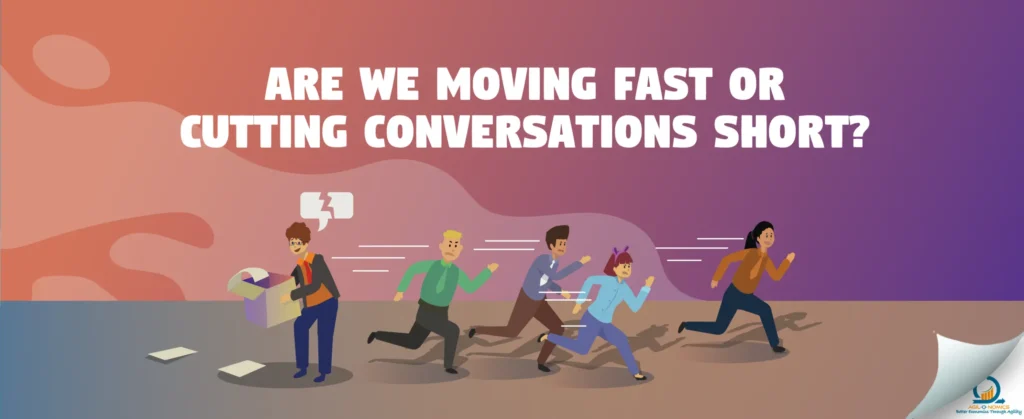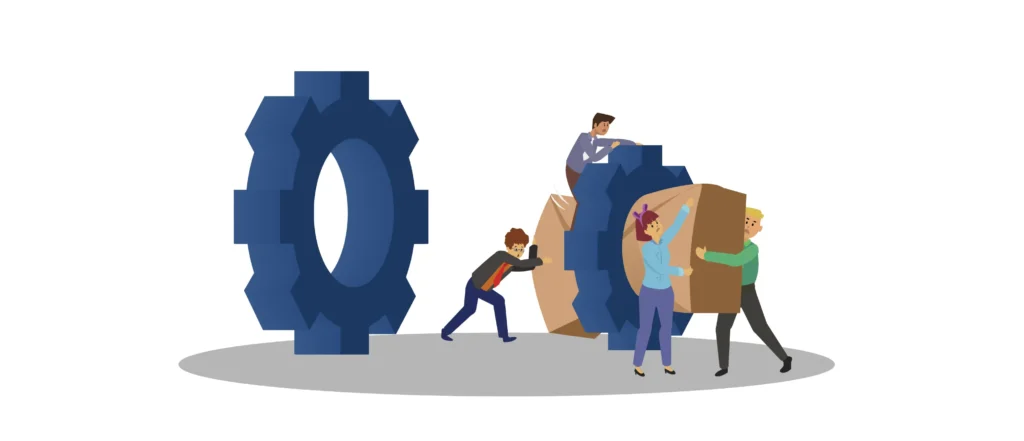
Modern teams pride themselves on speed. Short meetings, quick cycles, and streamlined rituals are designed to keep momentum high. On paper, it looks efficient: the stand-up stays within 15 minutes, the planning session is wrapped in two hours, and retrospectives end right on schedule.
But beneath the surface, another story unfolds. Conversations are cut mid-thought. Insights surface but are pushed aside in the name of timing. Complex issues get logged, only to be revisited sprint after sprint without resolution.
This is the hidden cost of working fast: unfinished conversations.
Teams Stuck in Mid-Sentence
In many environments, the cadence of rituals shapes the way people talk. Stand-ups focus on progress updates, but when a blocker sparks meaningful discussion, the timer shuts it down. Retrospectives raise real pain points, but there’s rarely space to explore them deeply. Even backlog refinement turns into speed dating with tasks—quick assessments, then on to the next.
The very structure that keeps teams moving forward also fragments the dialogue that builds real understanding. People leave meetings with half-finished thoughts, carrying them into Slack threads, side chats, or nowhere at all.
When Process Becomes the Limiter

Process is meant to help, not to hold teams back. A process that works balances flow with depth. It ensures progress without suffocating the very conversations that unlock collaboration, creativity, and innovation.
The problem arises when the process itself becomes too rigid. Timeboxes and cadences prevent drift, but they also make it easy to push the harder issues out of view. Recurring misalignments stay unresolved. Cross-team challenges are noted but never addressed. Questions linger sprint after sprint because the space to answer them doesn’t exist.
In this way, the process stops supercharging teams and starts limiting them.
The Attention Tax
Living in a world of unfinished conversations creates what might be called an attention tax. Everyone moves forward, but not with full clarity. Teams are busy, but often not aligned. Issues feel familiar because they reappear in cycle after cycle, never fully solved.
The charts may show progress. The backlog may shrink. Yet underneath, there’s fatigue—an unspoken frustration that the important conversations always seem to stop mid-sentence.
Building a Process That Truly Works
The answer is not in abandoning the structure. Without guardrails, discussions can spiral endlessly. The solution lies in recognizing when speed undermines depth, and making deliberate space for the conversations that matter most.

Practical ways to strengthen the process include:
- Allowing flexibility in timeboxes when critical issues emerge, instead of cutting them short.
- Scheduling dedicated deep-dive sessions outside the standard cadence for problems that require more than a quick touch.
- Focusing on outcomes, not just timing—a session that ends with clarity is more valuable than one that ends exactly on the dot.
- Elevating conversations as value work—because alignment and understanding drive results as much as completed tasks do.
A process that works doesn’t measure success only by how short meetings are. It measures success by how well conversations translate into shared understanding, decisions, and meaningful action.
The Role of Technology and Tools

Technology and tools can either magnify the problem or help solve it. When teams rely only on dashboards and trackers, dialogue becomes secondary, and unfinished conversations multiply. But when tools are used to capture insights, structure deeper collaboration, and keep discussions alive between rituals, they can extend the value of face-to-face time.
The goal is not to replace dialogue but to ensure it continues—sustained, accessible, and actionable.
The Point We Can’t Lose
Speed is important. Flow is necessary. But when every conversation is cut short in service of moving fast, the team pays a hidden cost: partial understanding, recurring mistakes, and shallow alignment.
Supercharging teams is not only about keeping the pace high. It’s also about creating a rhythm where dialogue runs deep enough to fuel real progress. When process and tools serve that purpose, teams don’t just move quickly—they move together, with clarity and impact.

